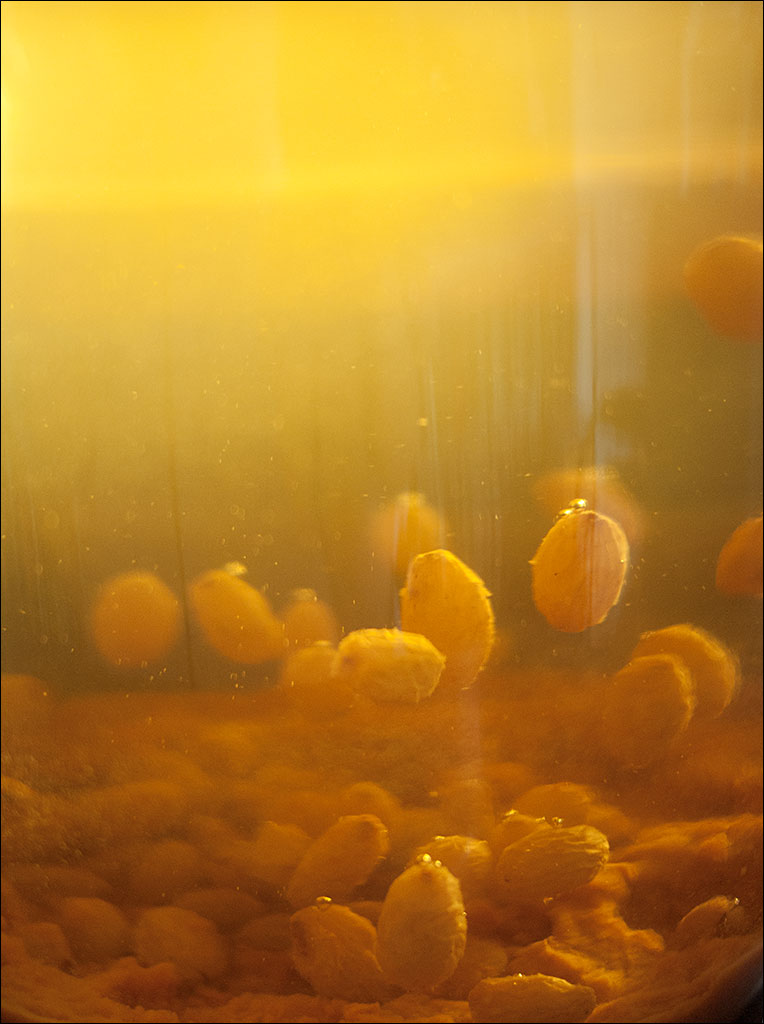 We have been asked for a little bit more information about how we make our hard cider. We follow the recipe for New England Barrel Cider, which we found in the wonderful book Cider: Making, Using & Enjoying Sweet and Hard Cider by Anne Proulx and Lew Nichols, an excellent reference for any cidermaker.
We have been asked for a little bit more information about how we make our hard cider. We follow the recipe for New England Barrel Cider, which we found in the wonderful book Cider: Making, Using & Enjoying Sweet and Hard Cider by Anne Proulx and Lew Nichols, an excellent reference for any cidermaker.
We buy our sweet cider from a local orchard that simply cold pasteurizes the juice, but adds no preservatives. The sweet cider is not clear, but a wonderful brown. If your cider does not have preservatives, you will know in about a week or so as it starts to bubble and acquires a tangy flavor through natural fermentation. Preservatives kill off the yeast you need for hard cider, although it gives the apple juice a long shelf life for consumers. Many cidermakers will use sulfur dioxide to remove some of the bad bacteria, particularly in hand-pressed juice, but we have not done this.
We mix this sweet cider with either 8 oz. / 225g of sugar or 10 fl oz. / 0.3 liters of honey per gallon (3.8 liters). After trying both, I prefer the honey, although different honeys will color the flavor differently. The cider apples make a difference as well, although, if you are getting you cider from an orchard like we do, you may not have a choice or even know what apples the cider was pressed from. From my limited experience, late-fall apples are better than early-fall varieties, but there are too many factors where I can be confident about that. If you are lucky enough to grow and press your own apples, then you can have much more control over the results. Guides like Cider: Making, Using & Enjoying Sweet and Hard Cider by Anne Proulx and Lew Nichols cover the choice of apples better than any blog post can.
The primary fermentation is very strong. If you are doing this in one-gallon jugs, the cider can bubble out of the month of the jug—clean this to prevent contamination. When this fermentation slows down after a few weeks or a month, we add 1.6 oz. / 45g of raisins per gallon to start the secondary fermentation. The secondary fermentation converts the harsh malic acid to lactic acid for a smoother flavor. The second fermentation continues for several months until bottling in the spring. It is important that the raisins are not coated in oil, a common practice with raisins to prevent them from sticking to each other, as that will contaminate the cider and end fermentation. The image above shows the raisins in a gallon jug after about month: you can see them rise and fall in the cider. The bottom of the jug shows the lees from honey. We do not add yeast, but it is a common practice. And if you have used sulfur dioxide, you will need yeast to start the primary fermentation. White-wine yeasts are mostly used; avoid bread or baking yeast.
I started making hard cider in one-gallon glass jugs. They are easy to find and easy to store. You can get air locks for these from most wine making suppliers to prevent contamination during fermentation. We now use a nine-gallon plastic vat or barrel we bought at a winemaking supplier. Old wooden barrels are not recommend as they are most likely to be contaminated and not air tight. Everything should be clean.
We bottle our cider in half-gallon jugs. The cider can still be a little cloudy from the lees and so we filter the cider during bottling—I simply use a coffee filter in a funnel. The particles that make it into the bottle will also settle over time. Many cidermakers can add more sophistication to the process by selecting certain apple varieties, measuring acidity and specific gravity, choosing yeast, etc., but we have kept this process very simple. We do use a vinometer to measure alcohol content. Most commercial hard ciders have an alcohol content similar to beer, our cider tends to have an alcohol content similar to wine.
